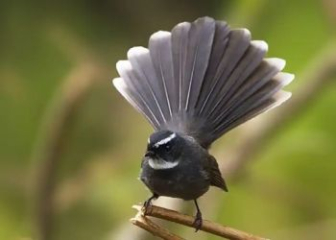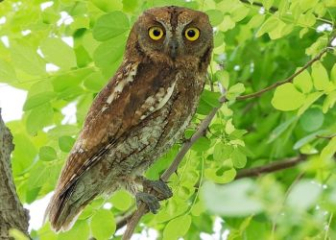Quaker Parrot - A pet parrot that likes to make nests from dry twigs.
Blog | by
Quaker parrot (monk parrot), a pet parrot originating from South America, is medium sized, intelligent, good at speaking, and likes to make nests from dry branches.
Quaker parrot (also known as monk parrots), a medium-sized pet parrot loved in many countries. They stand out with their colorful colors, very active temperament, intelligence, and ability to "learn to speak" very well. A special feature of this parrot species is that they have the habit of building very large nests with dry branches, in contrast to nesting in tree cavities like many other parrot species.
To help you understand and be successful in raising a Quaker parrot from the first time, in the article below, nicebirds have shared a lot of interesting related information including origin, habits as well as detailed instructions on how to raise it. Let's find out now!
Origin of Quaker Parrot
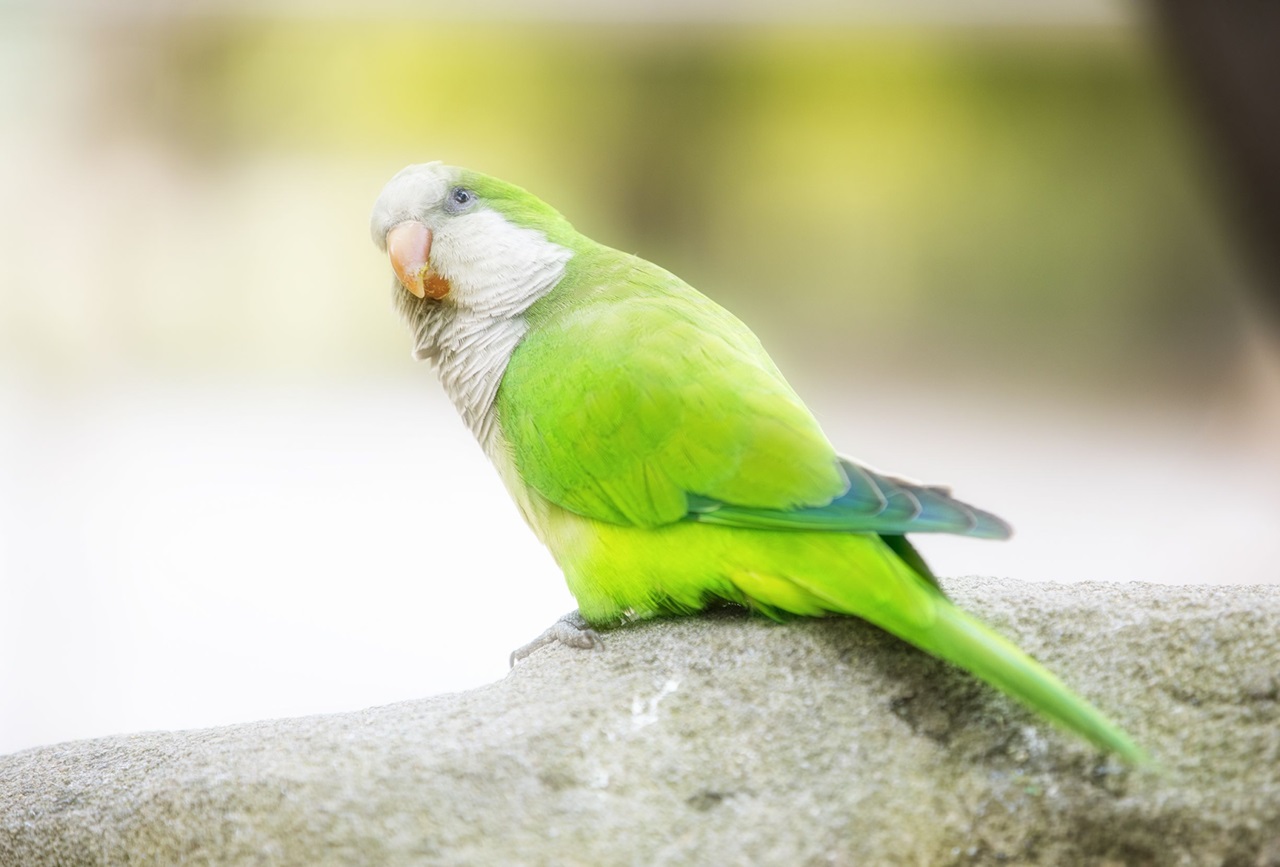
A Quaker parrot with a chubby, adorable appearance.
Quaker parrots, also known as monk parrots, scientific name Myiopsitta monachus, originate from South American countries such as Argentina, Uruguay, Paraguay, Brazil,...
They live mainly in grasslands, scrub forests or farms, where the climate is warm and food sources are abundant.
Nowadays, thanks to their high adaptability, monk parrots are imported to many other countries as pets. However, because of their ability to reproduce quickly and their habit of building large nests, this parrot species has been banned from import to some countries such as California, Australia, Hawaii... In Vietnam, they are still freely traded.
Quaker Parrot Appearance
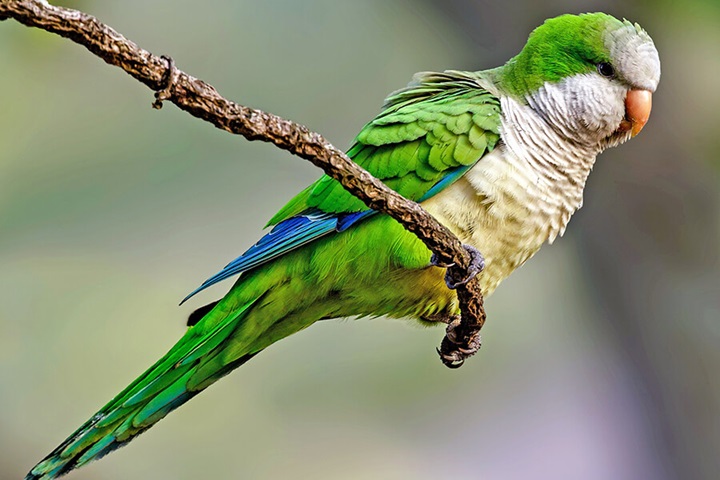
Adorable appearance of a Monk Parakeet (Monk Parakeet - Quaker).
Quaker parrots have a small, agile appearance and outstanding colors, so they attract many bird lovers. Below are the outstanding features of the shape and color of this parrot species. Let's learn together to easily recognize and distinguish it from other parrot species.
- Size : About 28 - 30 cm (including tail).
- Wingspan : 40 - 48 cm
- Weight : 90 - 130g.
- Beak : Curved hook shape, light orange or pinkish orange in color.
- Eyes : Black or dark brown, looks very intelligent
- Original color : Head and thorax are pale ash gray, looking like wearing a monk's robe, back and wings are bright green, belly is usually green or pale yellow.
- Mutant colors : blue, yellow, white, light pastel colors,...
- Tail : Moderate length, not flared.
- Legs : Light gray, zygodactylus type - 2 front legs and 2 hind legs.
Quaker parrot behavior
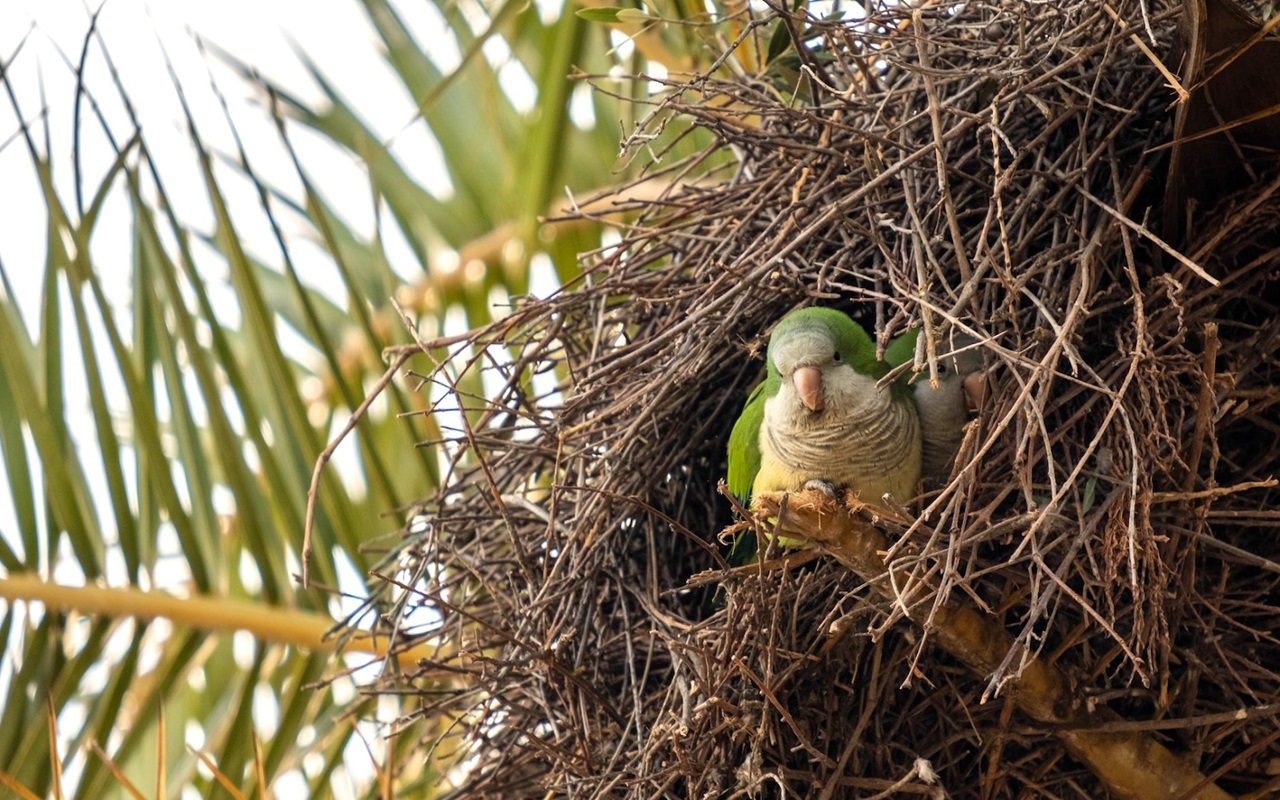
A Quaker parrot sits in its giant nest of dry twigs.
Quaker is a parrot with an intelligent, active and highly communicative personality. Let's learn more about the characteristics and behaviors of this parrot!
good imitation
Quaker parrots are one of the best parrots at “learning to talk”. They can imitate many different sounds such as human voices, bells, car horns, telephones, etc. If well trained, they can even say many words clearly, thereby interacting and making friends with their owners.
Very active
Quakers are small but very active parrots. They love to fly, climb and explore every corner, love to play with toys and some are even capable of opening cages and unfastening locks if they are not secured properly.
Build a big nest with tree branches
Unlike most other parrots that always nest in tree cavities, Quakers are the only parrots that know how to build nests out of dry twigs. Therefore, they have the habit of collecting small dry twigs, straw, and stubble to create a large nest that even has many "nooks and crannies".
In captivity, if you provide enough materials such as small sticks, straw, etc., they will still build themselves a "fancy" nest like in the natural environment.
Very affectionate, likes to cling to owner
Monk parrots are very affectionate, they can easily recognize their owners and often jump on shoulders, rub their heads against hands to "act spoiled". Even when they don't see you in sight, they can "call" to attract attention.
Although they are affectionate and attached to their owners, Quakers are very cautious and somewhat wary of strangers, not very friendly.
Tend to be territorial
Many Quaker parrots tend to claim an area as their own and consider it their nest, and if anyone invades, they may “bite” to protect their territory.
Even when their owners play with and care for other pets, this parrot can show a "jealous" attitude.
Quaker Parrot Care & Raising Guide for Beginners
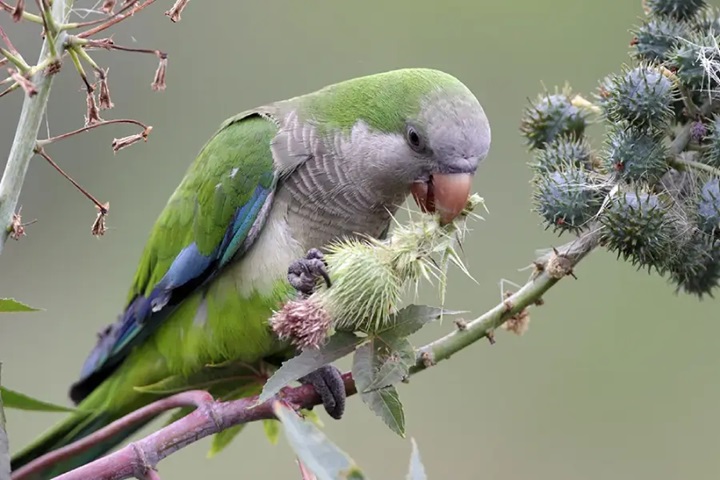
A monk parrot is eating flowers.
Although Quaker parrots are quite friendly, intelligent and adaptable, to be able to care for them properly, you need to grasp the following basic principles regarding cages, food and training. Specifically as follows:
Design suitable cages and pens
To help the monk parrot quickly get used to and develop well in captivity, you need to prepare an optimal cage and living space, at least meeting the following requirements:
- Size : 60 x 45 x 45 cm (length x width x height)
- Cage : Sturdy with a distance of less than 1.5 cm
- Cage decoration : Natural wooden perch, food and water tray, climbing bar, chew toys, litter tray,...
- Cage location : Should be placed in a quiet place with lots of natural light but not too harsh or sheltered from the wind.
What do Quaker parrots eat?
Maintaining a balanced, nutritious diet is an important factor in helping your Quaker parrot grow healthy and live a long life. When keeping them in captivity, you can feed them the following foods:
- Main food : Grain, pellets specifically for parrots.
- Supplemental foods : Carrots, pumpkin, broccoli, kale, apples, bananas, papaya,...
- Protein-rich foods : Boiled eggs, roasted peanuts,...
- Drinking water : Clean water, changed daily.
- Prohibited foods : Avocado, chocolate, onions, garlic, spices,... because they can cause poisoning to parrots.
Quaker Parrot Cage and Grooming Care
To keep your parrot smelling good and free of unpleasant odors, you need to do the following:
- Cage cleaning : At least 2-3 times a week, can be done every day if time permits. Tasks such as cleaning the litter tray, removing leftover food, cleaning the parrot's food and water troughs.
- Bathing parrots : Quaker parrots love water, so you should regularly bathe them by spraying them with a light mist or placing them in a shallow basin of water to bathe and preen their feathers.
Training & Interaction with Quakers
Quaker is a hyperactive parrot, so you need to spend a lot of time interacting and training them to help them become more obedient and docile. Specifically as follows:
- Every day needs to be out of the cage for 1 - 2 hours to be able to fly freely.
- Basic training should be given such as practicing climbing on your hand when called by name, repeating simple words to help the parrot practice speaking,...
- Use positive teaching methods with rewards for correct performance, avoid yelling or threatening which can cause stress and fear in parrots.
- Only teach for 5 - 10 minutes a day, don't push too long.
Quaker Health Care
In addition to providing a suitable living environment and a balanced diet, you need to pay attention to the health care of your monk parrot so that they can live as long as possible. Please note the following:
Signs of a healthy parrot :
- Parrots are very active.
- Eat well
- Shiny, smooth fur
- Bright eyes. smart.
Abnormal signs :
- gloomy, inactive
- Fluffy fur, not eating
- Diarrhea
- Unusual call
When you see the above unusual signs, you need to observe more carefully and take your parrot to the veterinarian for timely examination and treatment.
Optimal disease prevention :
- Observe your parrot daily to detect any abnormalities early.
- Vaccinate, deworm, and deparasite as directed by your veterinarian.
- Ensure quality of food and drinks.
- Limit stress on parrots
- Do not let parrots endure excessive noise, smoky, dusty environments, harsh sunlight, etc.
- Regularly interact, care for, and play with your parrot.
Quaker parrot price list
If you want to own a Quaker parrot, you can refer to the price list we have compiled below.
Note: Prices will vary depending on time, origin, appearance and purity of the parrot.
|
Quaker Parrot |
Reference price (VND/piece) |
Characteristic |
|
Quaker pups (2 - 3 weeks old) |
1,500,000 - 2,500,000 |
Not yet shed feathers, cannot eat by itself, need careful care |
|
Quaker baby (1 - 2 months old) |
2,500,000 - 4,000,000 |
Self-feeding, easy to train, easy to tame |
|
Quaker Mature |
3,800,000 - 5,000,000 |
Well spoken, friendly, tame |
|
Quaker mutant strange color |
Over 7,000,000 |
Rare colors like yellow green, mint green,... |
Questions and answers about Quaker parrots
Can Quaker parrots talk?
Yes, Quakers learn to speak very well and they can say many different single words.
How long do Quaker parrots live?
Average 15 - 30 years, depending on care conditions.
Where to buy cheap Quaker parrots?
You can refer to some reputable bird shops such as: Canh Khuyen shop, Chim Viet, Pet Xinh Dot Net, Ha Dong bird farm,...
Beautiful Quaker Parrot Pictures
To help you better visualize the beauty of the Quaker parrot, here we have collected many of the cutest and most beautiful moments of this intelligent, active parrot. Let's admire it now!
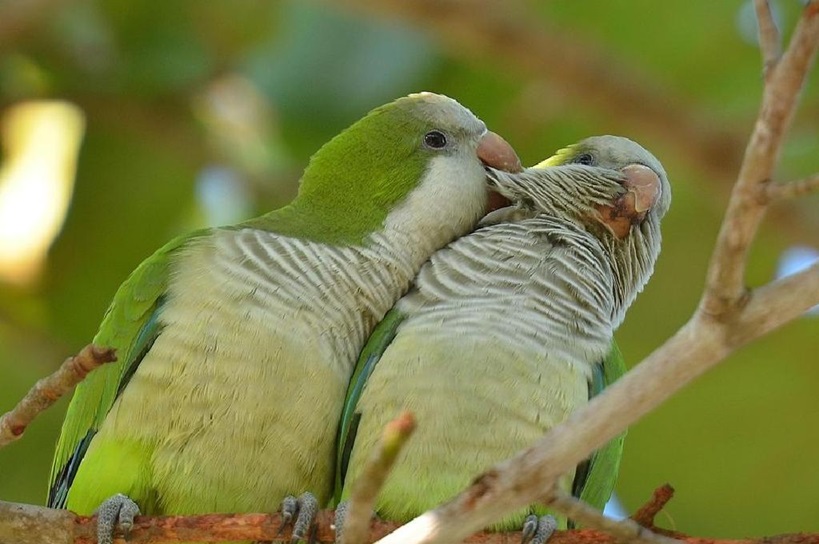
A Quaker parrot pecking at its friend's feathers.
.jpg)
Two South American monk parrots are "fighting" very aggressively.
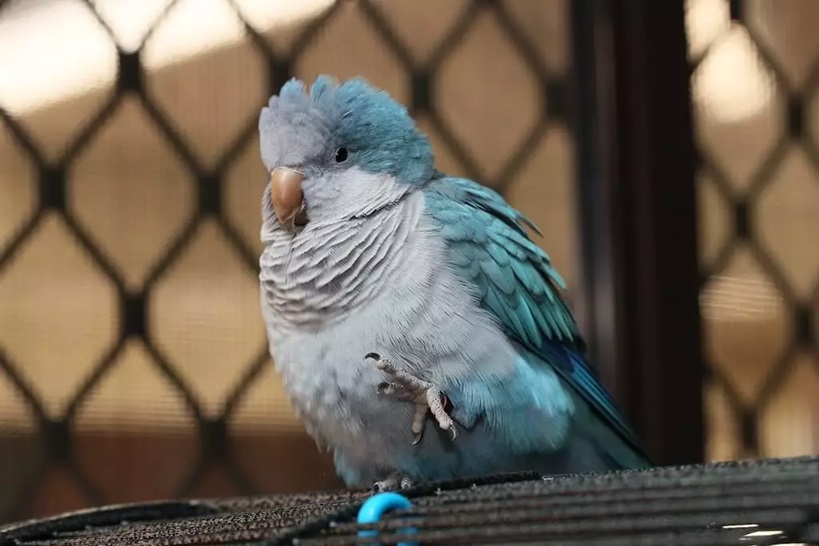
A Monk Blue Parekeet (Quaker blue) with a color mutation.
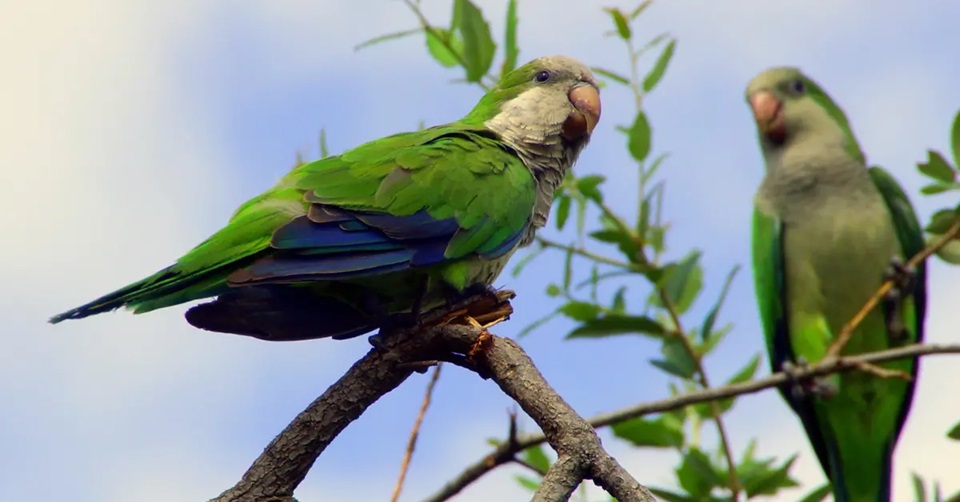
Two monk parrots are perched on a tree branch.

Image of a South American monk parrot spreading its wings and flying in the sky.
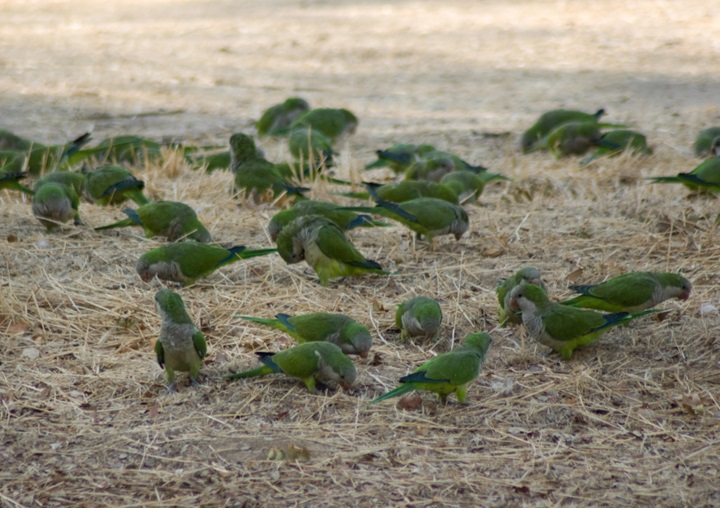
A giant flock of Quaker parrots.
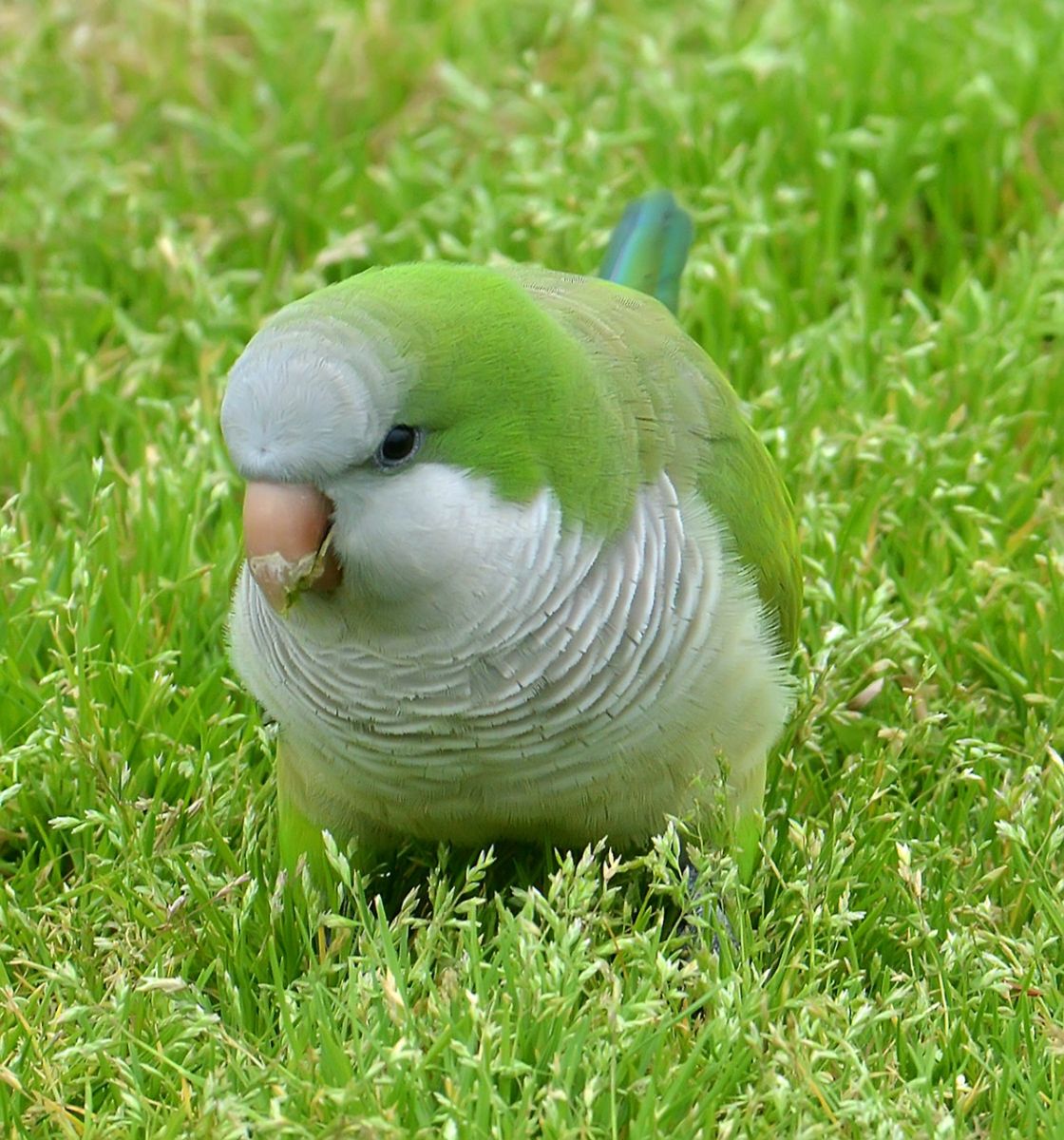
Image of a chubby, adorable Quaker parrot.

A Monk Parakeet is carrying a dry branch to make a nest.

Quaker parrot standing on owner's shoulder.
Thus, through the information that nicebirds.net shared above, it can be seen that Quaker parrots (monk parrots) are not only beautiful looking pet birds, but they are also extremely intelligent, friendly and have an amazing ability to "imitate".
With the above advantages, this parrot promises to bring a lot of joy and excitement to its owner!
Don't forget to visit our Blog section to learn more about other beautiful and impressive bird species so you can find the most suitable "winged friend" for yourself!

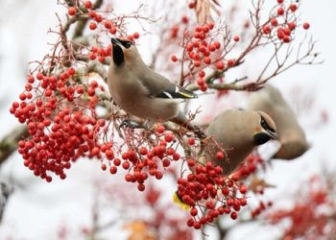

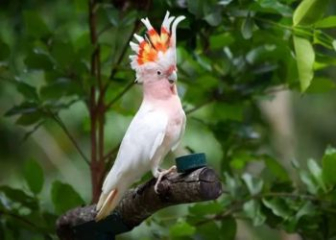
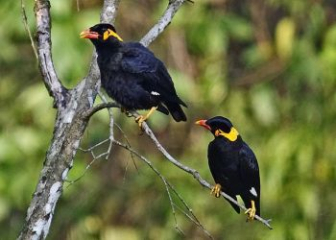
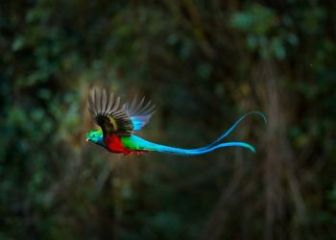





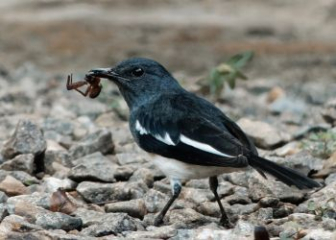
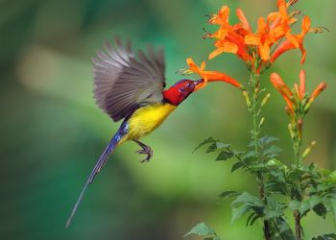


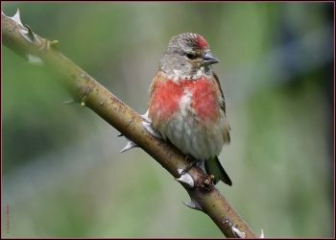
_350x250.jpg)
